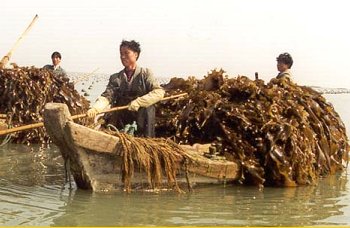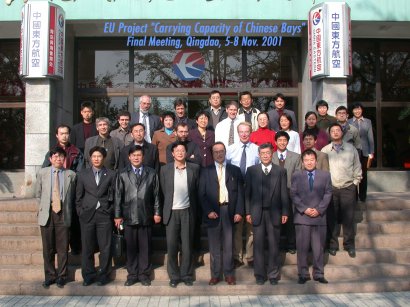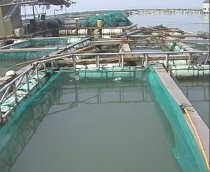Photo gallery
Carrying capacity and impact of aquaculture on the environment in Chinese bays
INCO-DC contract Nš ERBIC4CT 98-0291
|
|
This picture shows the
harvesting of kelp in Sanggou Bay. Kelp are cultivated on ropes which are
hung between longlines. The double ropes allow the depth of the kelp to be
adjusted according to the available sunlight and the turbidity of the
water.
There are areas of kelp monoculture, with ropes spaced 2m apart, and areas where polyculture of kelp and oysters, or kelp and scallop, is carried out, with ropes placed 3m from each other. |
| This photo was taken in November 2001, at the final project meeting. It's a beautiful sunny morning, outside the Huang Hai hotel in Qingdao - but already rather cool, as you can tell by the clothes worn by most people. Although Qingdao is right on Jiaozhou Bay, at a latitude of 36oN, in late November the temperature may be low enough for there to be snow on the beach. Huang Hai means "Yellow Sea", and was the venue both for the kick-off workshop and for the final project meeting. |
|
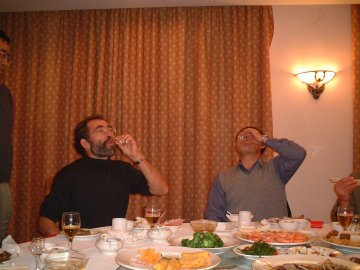 |
Coordinating this project was a full-time job for Cedric Bacher. Here he can be seen celebrating a toast in traditional Chinese style. At a banquet such as this, the menu is highly varied and refined. The host and other participants will honour their guests by proposing toasts, which may be directed at one person in particular or extended to all around the table. Frequently, such moments of celebration culminate in ganbei, literally to "dry the cup". Here, chinese white wine, also known as Mao-Tai, is the beverage of choice. |
| In Western countries, aquaculture is the fastest-growing food production sector, but which has largely been both intensive and monospecific. In contrast, Asia has a long history of combining different species in polyculture, embracing principles of ecological engineering within integrated farming systems, achieving a more sustainable solution through recycling of wastes from culture cages, ponds and sewage outfalls into high-value protein crops for human consumption. In China alone, the annual output from aquaculture is more than 20 million tons, 30% higher than the wild catch, and represents more than 60% of total global aquaculture. |
|
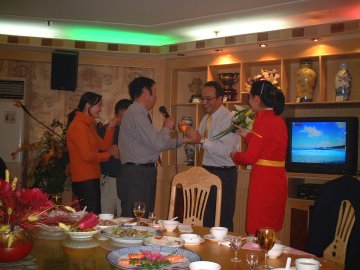 |
In this last picture, the
courtesy and generosity of Chinese hosts is demonstrated by a gift of
flowers and wine, after a particularly unusual rendition of a popular
western ballad.
Karaoke is a staple component of the Chinese joy of living. The fun and friendship generated by these occasions was certainly a factor in building the bridges required for completing our work. These images reflect the fond memories of three excellent years. |
